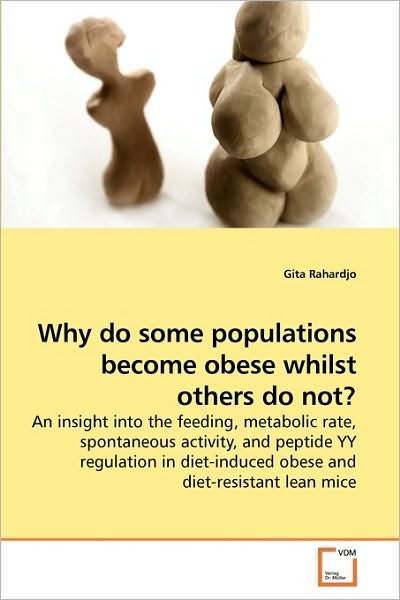
Tell your friends about this item:
Why Do Some Populations Become Obese Whilst Others Do Not?: an Insight into the Feeding, Metabolic Rate, Spontaneous Activity, and Peptide Yy ... Obese and Diet-resistant Lean Mice
Gita Rahardjo
Why Do Some Populations Become Obese Whilst Others Do Not?: an Insight into the Feeding, Metabolic Rate, Spontaneous Activity, and Peptide Yy ... Obese and Diet-resistant Lean Mice
Gita Rahardjo
Some individuals become obese while others remain lean on a high energy diet. The cause of this susceptibility to the development of diet-induced obesity is still unknown. Variations in energy intake, expenditure and the type of substrate being oxidised, as well as peptide YY system regulation are believed to contribute to differential susceptibility to the development of diet-induced obesity. To answer these questions, a project was taken place to compare energy balance regulation including energy intake and expenditure, and the peptide YY regulation in diet-induced obese and diet-resistant mice. To investigate energy balance, this project measured food intake, body mass gain, spontaneous activity, 24h-metabolic rates and body composition in these mice. Plasma PYY and its central binding sites (Neuropeptide Y-Y1, 2 and 5 receptors) were also measured. The result of this project has definitely given an insight into the major contributing factor to diet-induced obesity in this animal model and how the peptide YY regulation may contribute at least partially towards the development of diet-induced obesity.
| Media | Books Paperback Book (Book with soft cover and glued back) |
| Released | May 5, 2010 |
| ISBN13 | 9783639247787 |
| Publishers | VDM Verlag Dr. Müller |
| Pages | 76 |
| Dimensions | 225 × 5 × 150 mm · 122 g |
| Language | English |
See all of Gita Rahardjo ( e.g. Paperback Book )

 Christmas presents can be returned until 31 January
Christmas presents can be returned until 31 January

